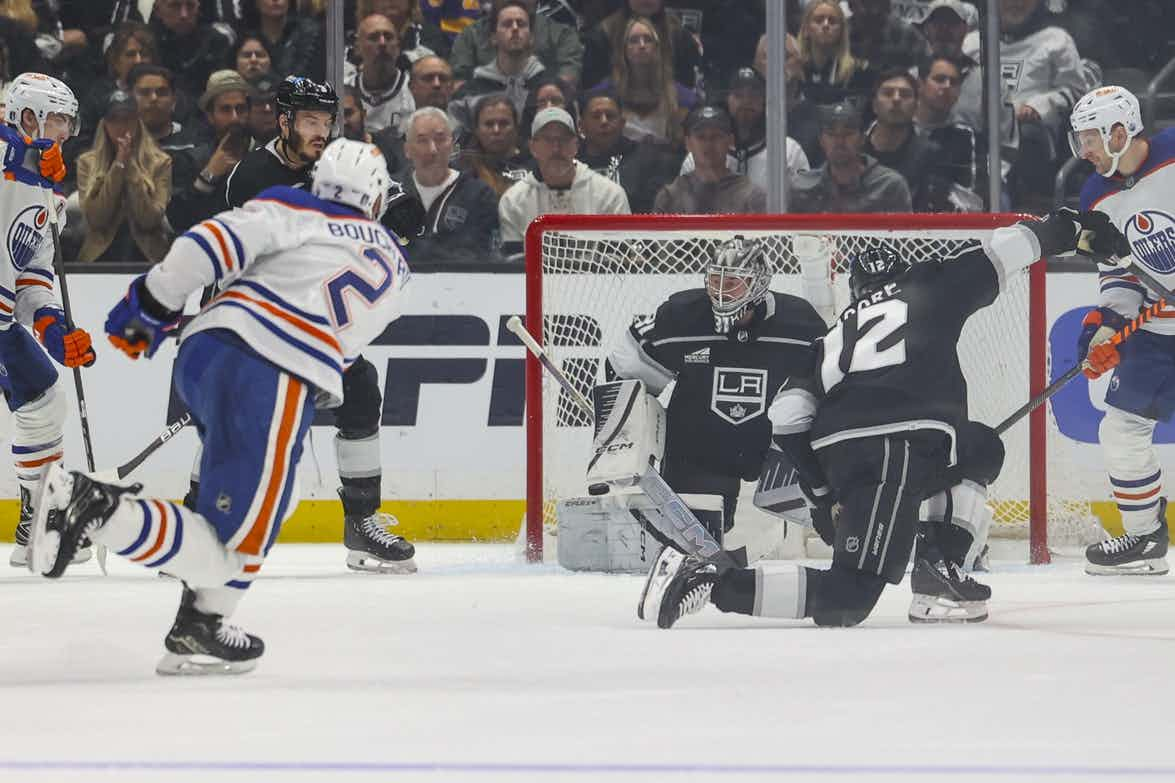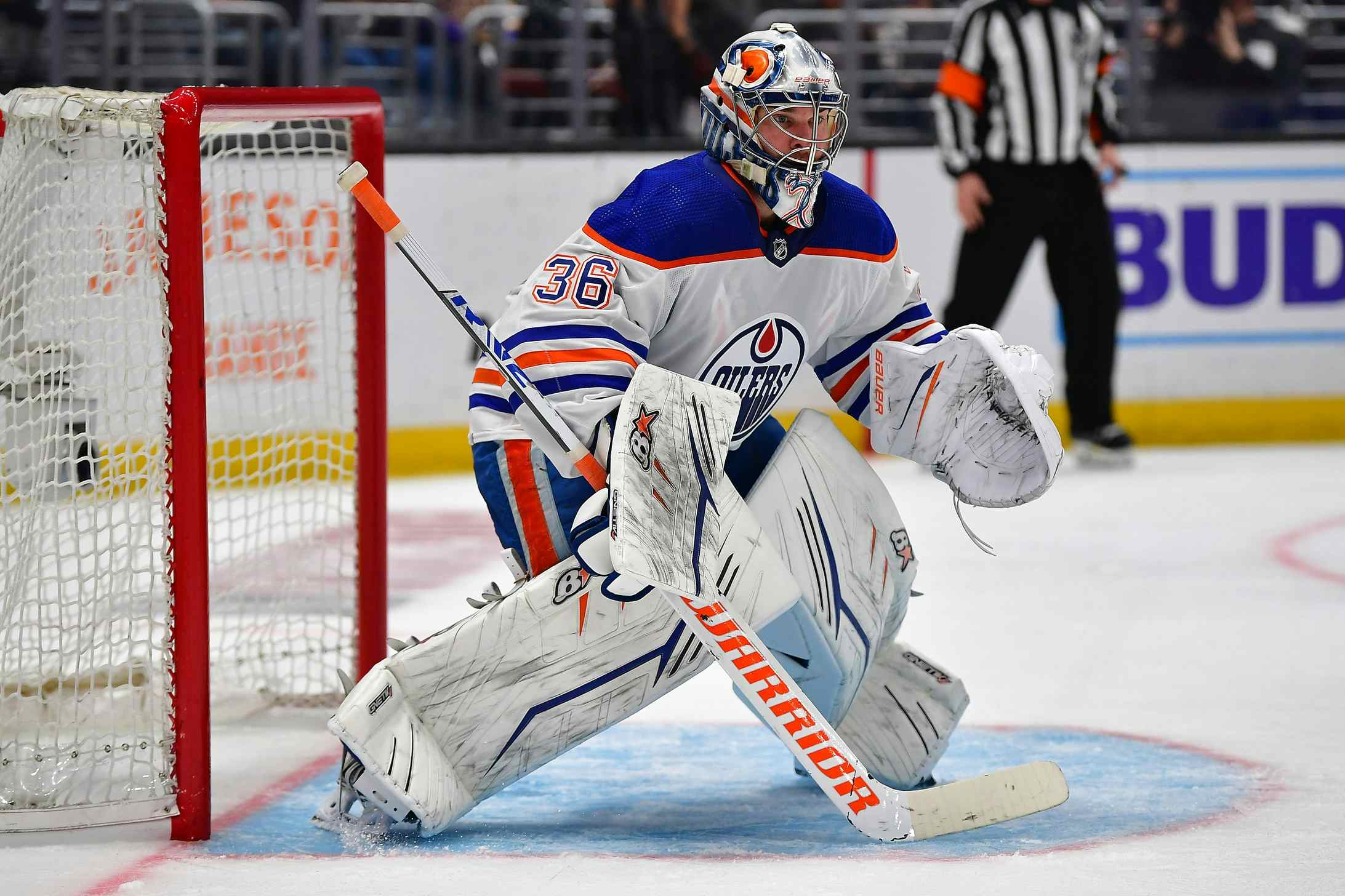Faithless In Little, Faithless In Much

Seemingly, the common reaction to deals like the one inked by Andy Sutton and Cam Barker is straight forward: the Oilers need defensive help, they’re signing guys on short-term deals, and the dollars don’t matter so why worry about them?
There’s a very good reason to worry about them.
Someday, if the rebuild eventually bears fruit in the form of a competitive Oilers team, being able to manage contracts and exact the highest level of actual ability for every dollar spent is going to be paramount. Jordan Eberle, Taylor Hall and Ryan Nugent-Hopkins will all need to be signed to contracts. The Oilers will need to figure out their goaltending situation without repeating the mistake made by the Tambellini regime when they signed Khabibulin. Defensemen will need to come from somewhere, and then paid reasonable amounts of money.
It shouldn’t come as a surprise that I don’t think the Oilers have been very good at identifying good players to spend their money on. Just a hair under $4.0 million sits on the books this season thanks to buyouts – namely Robert Nilsson and Sheldon Souray – and re-entry waivers (Gilbert Brule). We’ve seen the exodus of players on one-way contracts, such as Zack Stortini, Jeff Drouin-Deslauriers, and Brule to the minors. When it comes to blowing money, few teams in the league can compete with the post-2006 Edmonton Oilers.
The fact of the matter is that, no matter how elite the talent is that the Oilers manage to accumulate, they will not consistently be a contending team in a salary cap world unless they figure out how to get value for dollars.
That’s one of the skills that Steve Tambellini needs to be showing now. Thanks to the rebuild, there’s a built-in excuse for any on-ice failures: the Oilers aren’t winning now because they’re collecting the talent to win in the future. There is no such excuse for failures in negotiation.
Every trade made, every contract signed, every negotiation concluded should be scrutinized now to determine whether Steve Tambellini is up to the job of managing all the elite talent the Oilers are collecting courtesy of their current on-ice ineptitude. Negotiating with a cast-off like Cam Barker isn’t the same as negotiating with a star restricted free agent, like Taylor Hall, but the skills used are similar. There’s an old adage – originally Biblical in origin that says something to the effect of ‘faithful in little, faithful also in much; faithless in little, faithless also in much.’ It’s true.
Let’s look at the Cam Barker negotiations. In the summer of 2011, he was an unrestricted free agent at the tender age of 25. Already traded away by the team that drafted him – the Chicago Blackhawks – he’d just been bought out by the Minnesota Wild, who had been using him as a third-pairing defenseman the year before. The Wild took advantage of his age to do what the Oilers had done with Patrick O’Sullivan and Robert Nilsson: buy Barker out for just one-third of his guaranteed dollars, paying him a hair over $1.0 million not to play for them in 2011-12. Prior to the buyout, Barker had cleared waivers, where the other 29 NHL teams declined to take on his $3.083 million cap hit.
Coming off a year where he wasn’t good enough to be a bottom-pairing defenseman for the 12th-best team in the Western Conference, a year where he’d been paid seven figures to go away, what sort of contract was Barker in line for? The Oilers experience in the past would indicate a small one – Patrick O’Sullivan has been on two-way deals since getting bought out, and Robert Nilsson wasn’t able to get another NHL job. These players typically don’t command much – they’re trying to stay in the league.
Cam Barker was signed for $2.25 million by the Edmonton Oilers, despite the buyout and the fact that he’d never been more than a sub-average third-pairing defenseman with some power play ability. What does that say about Steve Tambellini’s ability to get value for money?
Then there’s the case of Andy Sutton. Sutton has lead a nomadic existence, travelling from team to team, and this year was shaping up no differently. He was in the final year of his deal with the Oilers, his seventh NHL franchise, and was a pending unrestricted free agent. Given Sutton’s age (he turns 37 in March), the Oilers’ rebuild and the fact that he would undoubtedly have some value as a depth defenseman for a competitive team, it was almost a foregone conclusion that he would be traded, despite the fact that it had been reported he really wanted to stay in Edmonton. Some select quotes from the Edmonton Journal’s Feb. 14 article on the signing:
"I told (Oilers general manager) Steve Tambellini right after my second suspension (eight games for a head hit on former Carolina Hurricanes winger Alexei Ponikarovsky) two months ago that I wanted to stay here," said Sutton, who has played for seven teams in a vagabond career.
He didn’t want to tug on an eighth NHL jersey, certainly not after moving his wife and baby girl, Keseniya, to Edmonton two weeks ago…
“I love the city, I love the guys, the organization’s heading in the right direction," said Sutton, who turns 37 next month. "You see the signs all over the place. The ups and downs are getting less and less. They’re building toward something that I want to be part of."
"I’ve done a lot of moving the last few years and I just got my family here (from California) and we weren’t looking forward to moving again. I didn’t want to leave and have to go through free agency again this summer," said Sutton.
So, armed with the knowledge that Sutton wanted to stay in Edmonton and didn’t want to uproot his family yet again, how did Steve Tambellini do? He signed him to a one-year deal worth $1.5 million in guaranteed money with a $250,000 games played bonus, for a total contract value of $1.75 million. Tyler Dellow looked at the entire list of defensemen in the same minutes-played range as Sutton to hit UFA status over the last few years. His conclusion:
So the average, excluding the guys who retired and got zero, is $1.033MM. Sutton’s guaranteed $500K more, with an additional $250K in bonuses. The median’s $825K. The average age of these guys is 30.4; Sutton’s 6.5 years older. The median age is 30. Of the six guys older than 30, Sutton’s $750K over the next highest cap hit. So, uh, why are the Oilers going to carry a $1.75MM cap hit for Sutton? I can’t imagine a sensible answer to this question.
It’s as if there’s not a soul in the Oilers’ front office who thinks about these things in terms of leverage. Andy Sutton is a 6/7 defenceman on the second worst team in the NHL. He was ditched by his last team, for whom he couldn’t crack 15 minutes a night, in exchange for a bad contract because they didn’t want him around any more. His agent has to know what the market usually looks like for guys like him – $1MM is a great payday. We KNOW that the Oilers are aware of CapGeek; do they not have a guy who tries to figure out what guys like this get paid? It’s baffling.
In short, armed with the knowledge that he could get a return for Sutton on the trade market, that Sutton wanted to stay in Edmonton, and that Sutton is unlikely to be around when the Oilers are supposed to be competitive, Steve Tambellini negotiated himself a deal that pays Sutton nearly double what his comparables have made over the last two seasons.
We know money matters to the Oilers. They’ve plead poverty practically without letup since the mid-1980’s looking to get concessions from various levels of government. There’s a very real incentive for them to save dollars where they can – and no incentive at all to just hand over hundreds of thousands of dollars in extra money to guys on one year deals.
Why is Steve Tambellini overpaying largely irrelevant depth pieces? Keeping in mind Occam’s razor, which warns us against needlessly complicating things, I see one likely scenario: he isn’t good at getting the best possible deal with Daryl Katz’s money. Given that getting value for money is possibly the highest priority for a general manager in a salary cap world, what does that say about what he’ll do as a manager if and when the Oilers are competitive?
Faithless in least, faithless also in much. If he screws up the little stuff, he’s going to screw up the big stuff too.
Recent articles from Jonathan Willis





